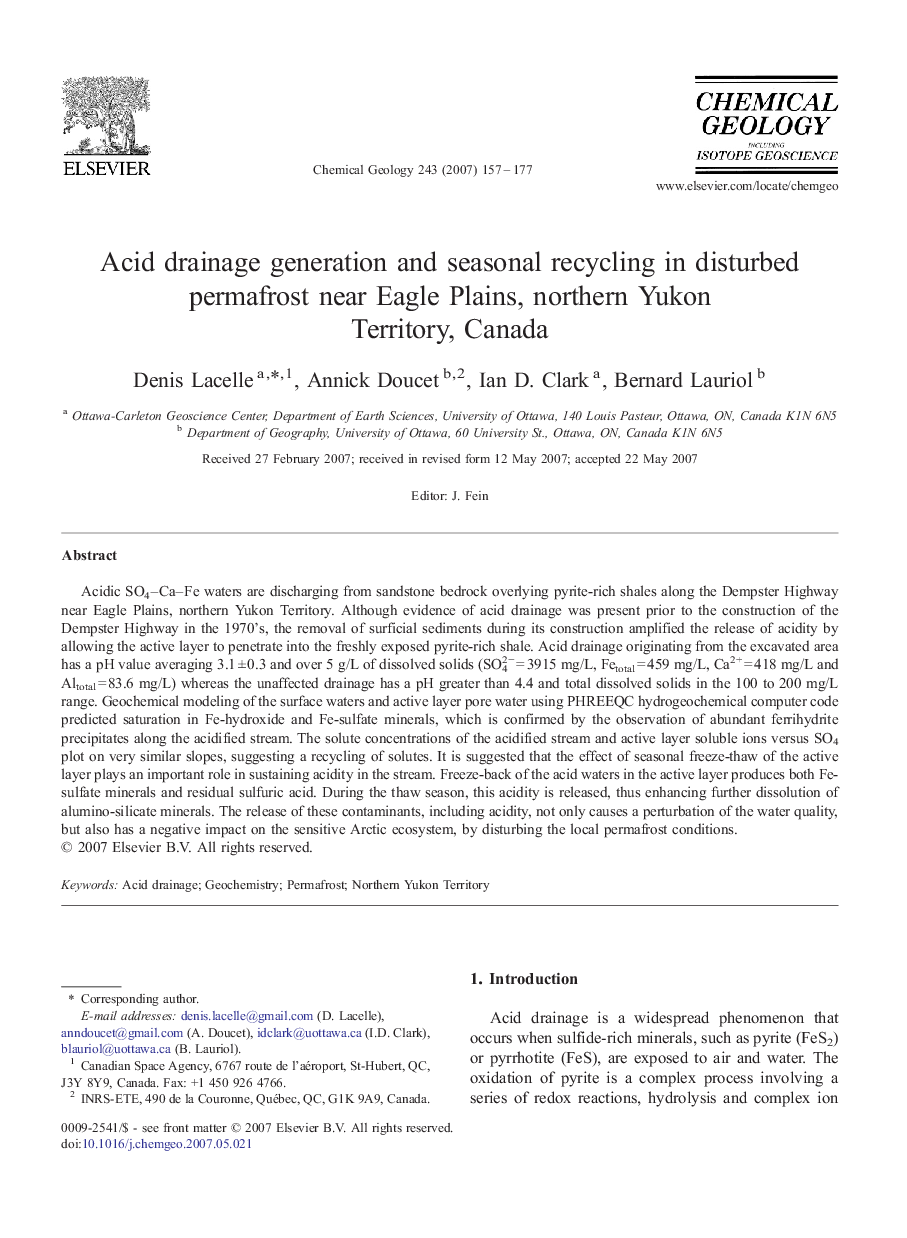| Article ID | Journal | Published Year | Pages | File Type |
|---|---|---|---|---|
| 4700824 | Chemical Geology | 2007 | 21 Pages |
Acidic SO4–Ca–Fe waters are discharging from sandstone bedrock overlying pyrite-rich shales along the Dempster Highway near Eagle Plains, northern Yukon Territory. Although evidence of acid drainage was present prior to the construction of the Dempster Highway in the 1970's, the removal of surficial sediments during its construction amplified the release of acidity by allowing the active layer to penetrate into the freshly exposed pyrite-rich shale. Acid drainage originating from the excavated area has a pH value averaging 3.1 ± 0.3 and over 5 g/L of dissolved solids (SO42− = 3915 mg/L, Fetotal = 459 mg/L, Ca2+ = 418 mg/L and Altotal = 83.6 mg/L) whereas the unaffected drainage has a pH greater than 4.4 and total dissolved solids in the 100 to 200 mg/L range. Geochemical modeling of the surface waters and active layer pore water using PHREEQC hydrogeochemical computer code predicted saturation in Fe-hydroxide and Fe-sulfate minerals, which is confirmed by the observation of abundant ferrihydrite precipitates along the acidified stream. The solute concentrations of the acidified stream and active layer soluble ions versus SO4 plot on very similar slopes, suggesting a recycling of solutes. It is suggested that the effect of seasonal freeze-thaw of the active layer plays an important role in sustaining acidity in the stream. Freeze-back of the acid waters in the active layer produces both Fe-sulfate minerals and residual sulfuric acid. During the thaw season, this acidity is released, thus enhancing further dissolution of alumino-silicate minerals. The release of these contaminants, including acidity, not only causes a perturbation of the water quality, but also has a negative impact on the sensitive Arctic ecosystem, by disturbing the local permafrost conditions.
